As we enter the second weekend of November, the best-of-three first round of the MLS Cup Playoffs comes to an end, with eight clubs in action looking to advance further.
Minnesota United FC aren’t one of them, as they are already busy preparing for their Western Conference semi-final clash at Los Angeles Galaxy, which will take place after the international break.
Founded in 2015, this is only the second time Minnesota has made it past the first round of the playoffs in franchise history and the first since 2020, when they reached the Conference Finals during a shortened season at the height of the pandemic.
Since then, Adrian Heath, their inaugural manager after they joined MLS as an expansion team in 2017, left the club at the end of last year, ending a seven-year tenure in the dugout.
Another Englishman, 32-year-old Eric Ramsay, who worked as a youth and assistant coach with Chelsea, Manchester United, and the Wales national team, came in.
Following his appointment at Allianz Field, he became the youngest permanent manager in MLS history.
He was tasked with leading the team back into the playoffs after failing to qualify last term for the first time since 2018.
It’s also a feat that seemed unlikely in late July when the Major League Soccer season took a pause for the month-long Leagues Cup break, a point at which Minnesota were on a poor run of just two wins in their last eleven games and barely clinging onto a ninth position in the West, which is the final playoff berth via a wild card tie.
After league play resumed in late August, they finished the regular season strongly, with six wins in their last nine games and a sixth-place finish that secured a direct playoff spot.
They then ousted third-placed Real Salt Lake in two penalty shootouts to set up that upcoming showdown in Southern California.
This tactical analysis will
examinehow the club nicknamed The Loons managed to turn their season around in the late stages and the changes they made that have got them into the last four of the West in this year’s playoffs.
Eric Ramsay Tactics At Minnesota United FC
Under Adrian Heath’s tactics, Minnesota predominantly set up a 4-2-3-1 formation for years, rarely tinkering away from it.
Since Eric Ramsay’s arrival early this year, Minnesota United tactics have moved more towards a shape with a back five in defence, which turns into a back three when the wing-backs push forward to attack in transitional phases of the game.
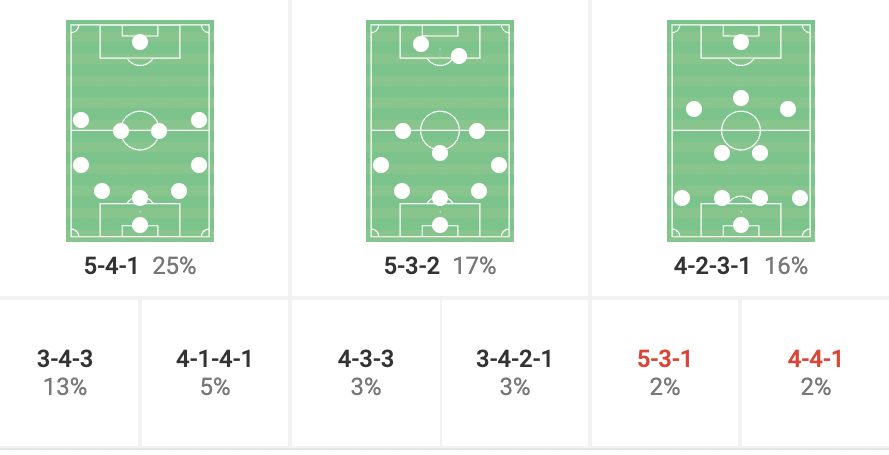
As the above graphic shows, his most preferred formation is a 5-4-1, with slight variations, including an extra forward in a 5-3-2 and a more attack-minded version in a 3-4-3.
His Minnesota United team likes to offer the possession of the ball to the opposition while sitting in a low or mid-block and looking for moments in the game to trigger a press and hit on the break when they regain the ball, usually higher up the field.
Interestingly, he’s also utilised players considered natural wingers, such as Bongokuhle Hlongwane and Joseph Rosales, in those wing-back positions, adapting them to those roles defensively while keeping their attacking threats during fast breaks and counterattacks.
His preferred 5-4-1 system has allowed Minnesota to build a solid defensive foundation with an organised
counter-pressing strategy and quick transitional attacks. This is displayed by their ranking in thetop 10 in both goals for and goals against in MLS this year.
Now that we have a basic idea of how Eric Ramsay’s formation at Minnesota and how he likes to set up and approach the game let’s examine what has transpired over the last few months.
They reached the Conference semi-finals after looking in danger of missing the playoffs altogether at one point.
Minnesota United Data Analysis Comparison
To compare Minnesota’s league performance before and after the Leagues Cup, we’ll examine the data from their last eleven league fixtures before and after the summer competition.
One of the things that sticks out the most is their considerable defensive improvement following the return of league play in late August under Eric Ramsay’s coaching style.
By the time the Leagues Cup break arrived, Minnesota had already allowed 41 goals in 25 games, 22 of which came in the last eleven games before the pause.
Only eight times have they conceded in their last nine regular-season encounters, which is one of the biggest reasons for their late-season resurgence and run of great form.
Minnesota United Shots Against Map
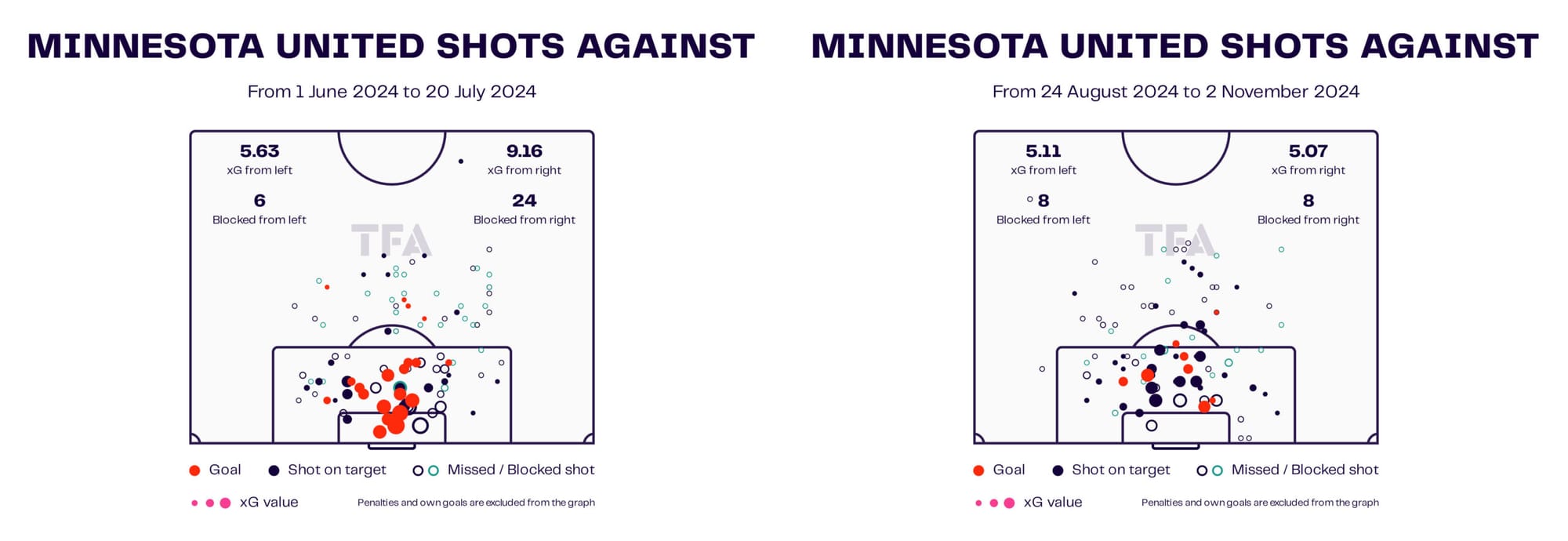
Looking at the data visualisation above from the two periods, it’s noticeable just how leaky Minnesota was defensively from their right-hand side on the left graphic, with a 9.16 xG for the opposition, as well as how many high xG value attempts they were considering right in front of their own goal.
The right graphic shows far fewer high xG value attempts allowed and a much more even defence in terms of opposing xG and blocked shots.
Minnesota United Shots Faced By Goalkeeper Map

Another critical element in their defensive improvement is the return of Dayne St. Clair, their #1 goalkeeper.
He was missing during most of the spell prior to the Leagues Cup due to international duty when he represented Canada during their fourth-place finish at Copa América.
As evidenced by the graphic on the left, their stand-in custodians during his absence, Clint Irwin and Alec Smir, were not up to par.
Ramsay struggled to find solutions for his missing first choice, with Minnesota conceding 18 times in the eight games that he missed during this period.
He returned to club action shortly before the Leagues Cup, and his performance following the tournament noted another significant improvement for Minnesota defensively in the goalkeeping department.
Although the lower xG faced is primarily down to the improving defence, as mentioned in front of him, it’s the prevented goals stat that indicates the difference of level between St. Clair and the rest of Minnesota’s keepers, with over three goals prevented that they weren’t getting while he was gone.
Minnesota United Shots Map

Minnesota’s defending and goalkeeping improved significantly following the Leagues Cup, but that’s not all.
As we can see above, compared to the left graphic, Minnesota generated over 20 more attempts at goal in the same amount of games after MLS play resumed in late August, with a 6.15 xG increase over the previous period to boot.
Although they weren’t struggling to score goals earlier in the campaign, offensive production upturned in the latter part of the season, as they averaged two goals per game in the final regular-season engagements following the Leagues Cup.
A large part of that is due to two of the summer acquisitions that have become instantly key for The Loons, which we’ll look more at below.
Minnesota United’s Three Key Summer Signings
Minnesota United had a busy summer transfer window.
They brought in six new players to the club and offered first-team contracts to a couple of players in their reserve team.
Three of those purchases have provided instant value to Ramsay’s team and become regular fixtures in their starting lineup in next to no time during this run they’ve been on.
Let’s take a closer look at them.
Kelvin Yeboah
The most high-profile of the three, Kelvin Yeboah, arrived as a Designated Player from the Italian club Genoa CFC, as the club hoped he would solve their issue in the centre-forward position.
With Finnish international Teemu Pukki, another of their DPs, struggling with health and goals this year and Canadian international Tani Oluwaseyi struggling to find consistency, Minnesota needed to find someone who could regularly bring goals to the team, and they looked to Yeboah to do that.
The move has paid immediate dividends, with the 24-year-old striker already registering seven goals and three assists in just eleven games for the club, making him one of the most productive players in the MLS post-Leagues Cup.
Kelvin Yeboah Shots Map
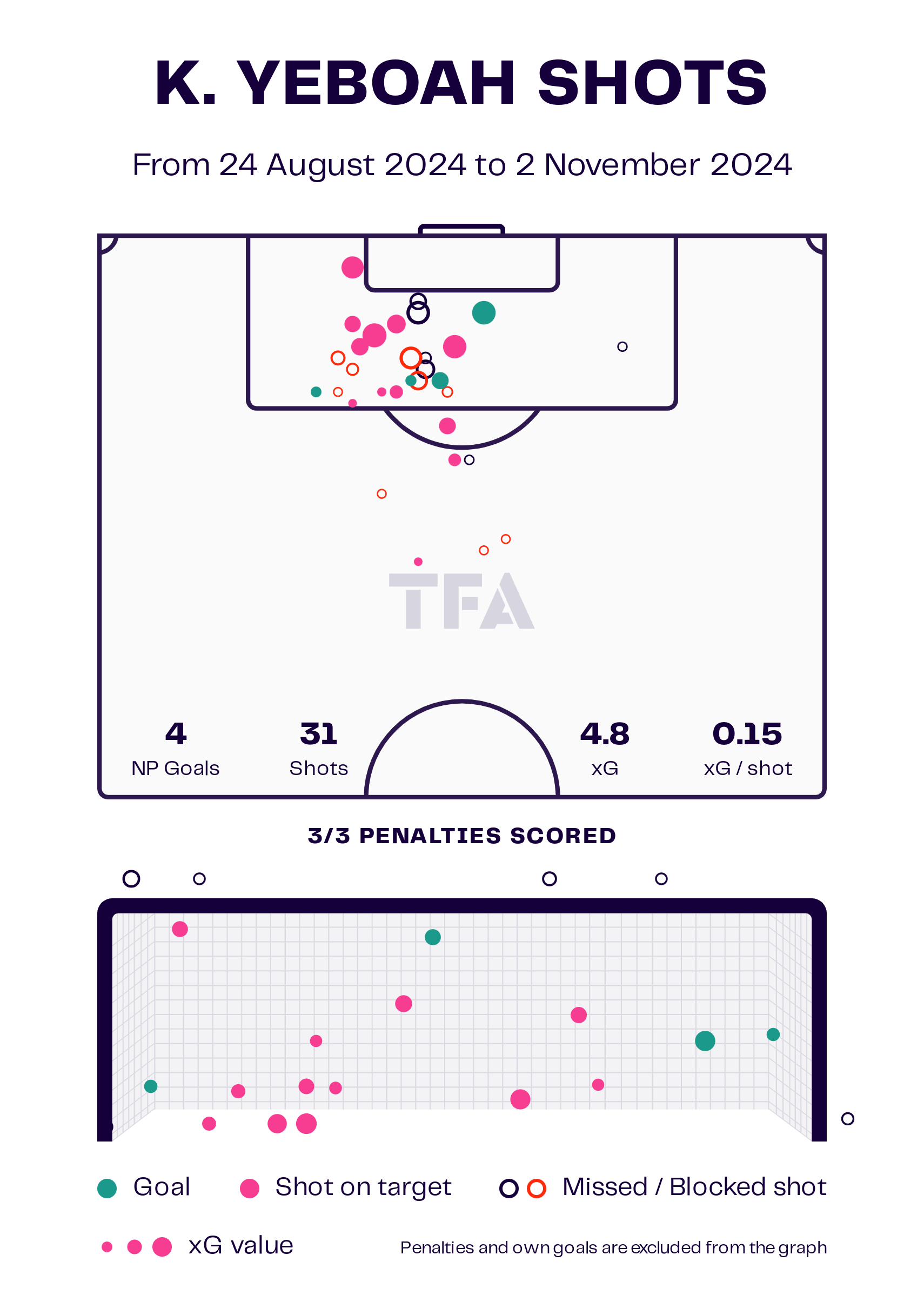
As we can see above, Yeboah attempts about three shots per game with an xG of 4.8, with almost all of his strikes at goal coming from inside the box.
This makes him the box threat that Minnesota needed up front as the lone striker in their 5-4-1 scheme, and his potency in front of goal was just precisely what the doctor ordered going into the business end of the year when he arrived in late August.
Joaquín Pereyra
The other aforementioned signing has also become an essential figure to Minnesota offensively, albeit without Yeboah’s direct production numbers in comparison.
One of Minnesota’s struggles earlier in the year was how limited they were offensively through the left-hand side.
Pereyra’s arrival solved many of those issues as soon as the Argentine arrived.
Joaquín Pereyra Penetrating Carries Map & Pass Map
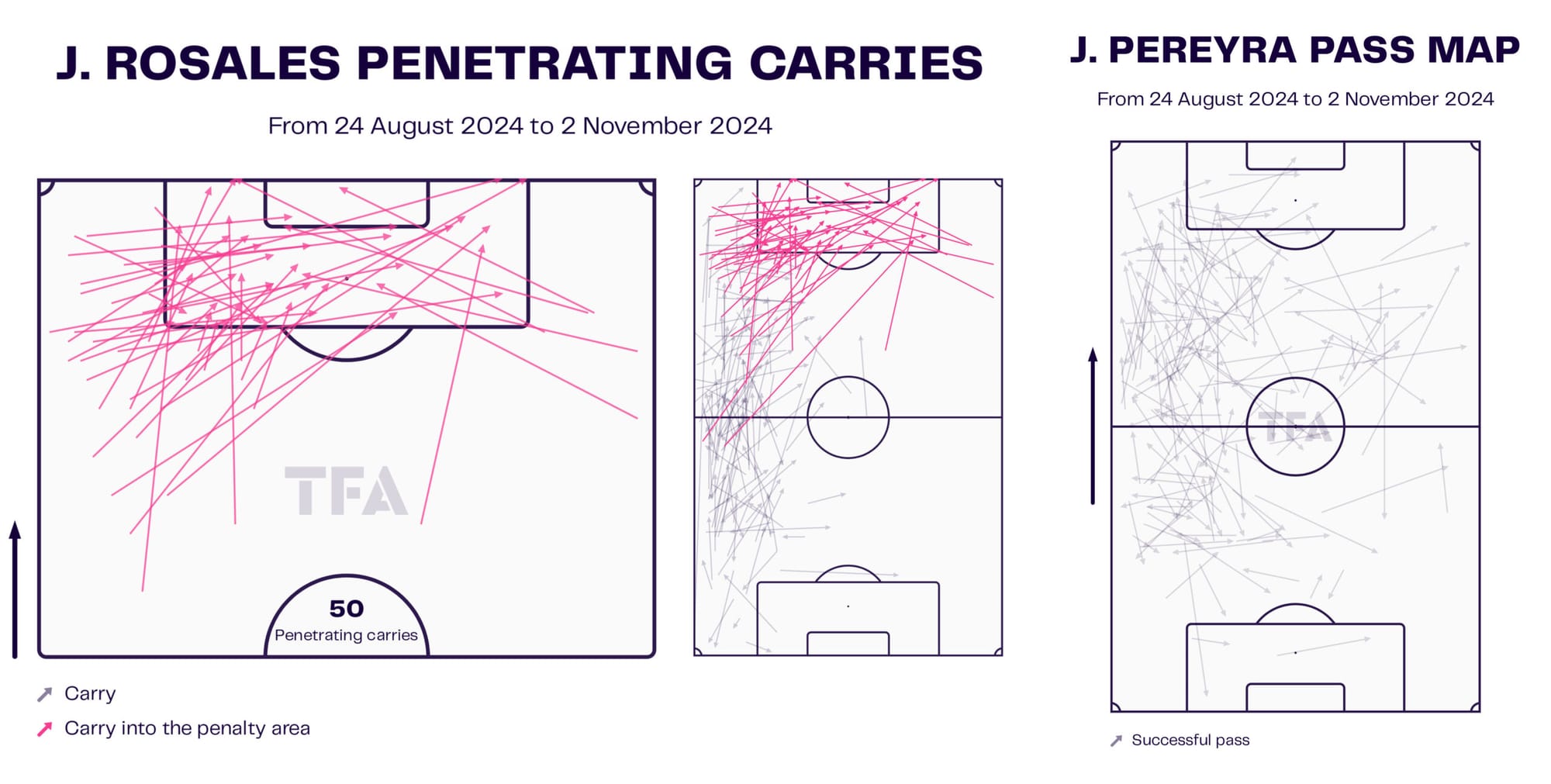
Although a central midfielder by trade, Pereyra has taken up the left-sided midfield position in Minnesota’s 5-4-1 shape.
There, he formed a good partnership with Joseph Rosales, who moved to left-back following Pereyra’s arrival.
Rosales is one of those wingers who Ramsay has converted into more of a wing-back.
Together with Pereyra’s playmaking abilities, Rosales has breathed new life into Minnesota’s attack coming from the left and helped them create a more balanced and varied offence, which has paid dividends for them in recent months.
The data visualization above does an excellent job of underlining the chemistry the two have built already on the field and turning what was once a weakness into a real offensive weapon for Minnesota.
Jefferson Díaz
As one of the protagonists in their defensive improvement, Díaz has been impressive since he arrived from Deportivo Cali in the summer and became a mainstay in the centre of the Minnesota defence.
The 6’1′ Colombian was brought in following the departures of two players in central defence, with Kervin Arriaga and Viktor Eriksson leaving for Partizan and Hammarby, respectively, and has done more than enough to replace them in Ramsay’s three-man central defence set-up.
Jefferson Díaz Defensive Terrirotry Map
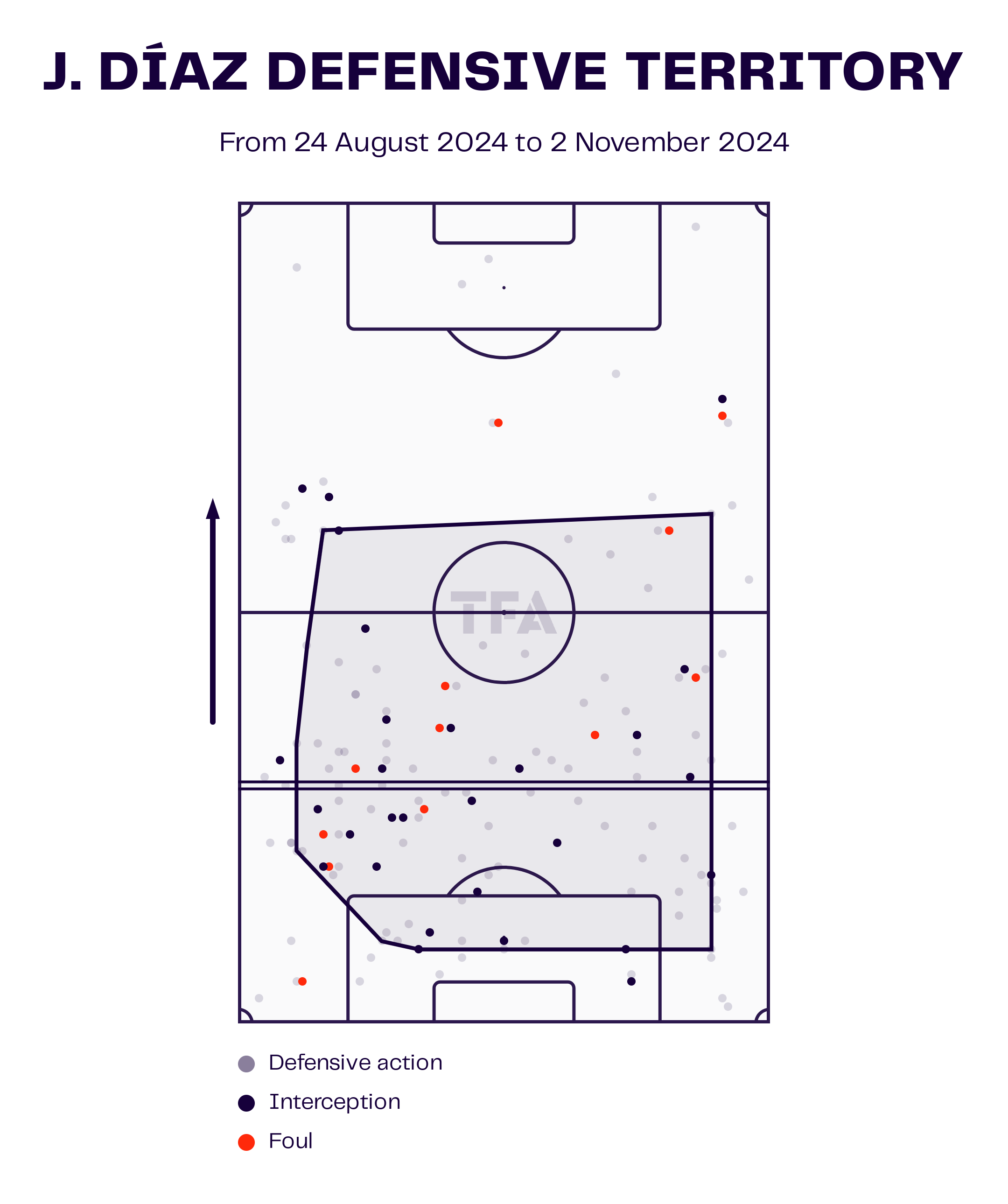
As we can see by his defensive territory map above, he is also able to get around the field and defend higher up in a mid-block, which allows Minnesota to press higher up the pitch.
In addition to his physical attributes, which give him advantages in aerial and physical duels, he’s also got enough pace to attempt to play in this aforementioned role, making him the well-rounded solution they needed for one of the wide central defensive positions in their back three.
Conclusion
As we can see, a combination of improvement on both ends of the field, returning players, and key signings of need have been some of the significant factors in Minnesota United’s late-season improvement.
This has allowed the club to return to the limelight in the most important part of the MLS calendar year, with a Conference semi-final looming on the horizon.
It remains to be seen whether they’ll be able to extend this run further in their quest for a first MLS Cup appearance and title.
But with the youngest manager in the league and one of the younger teams, with an average-aged starting lineup of 25 years, it’s safe to say that Minnesota United FC has a bright future ahead of it, regardless of the outcome of this season.

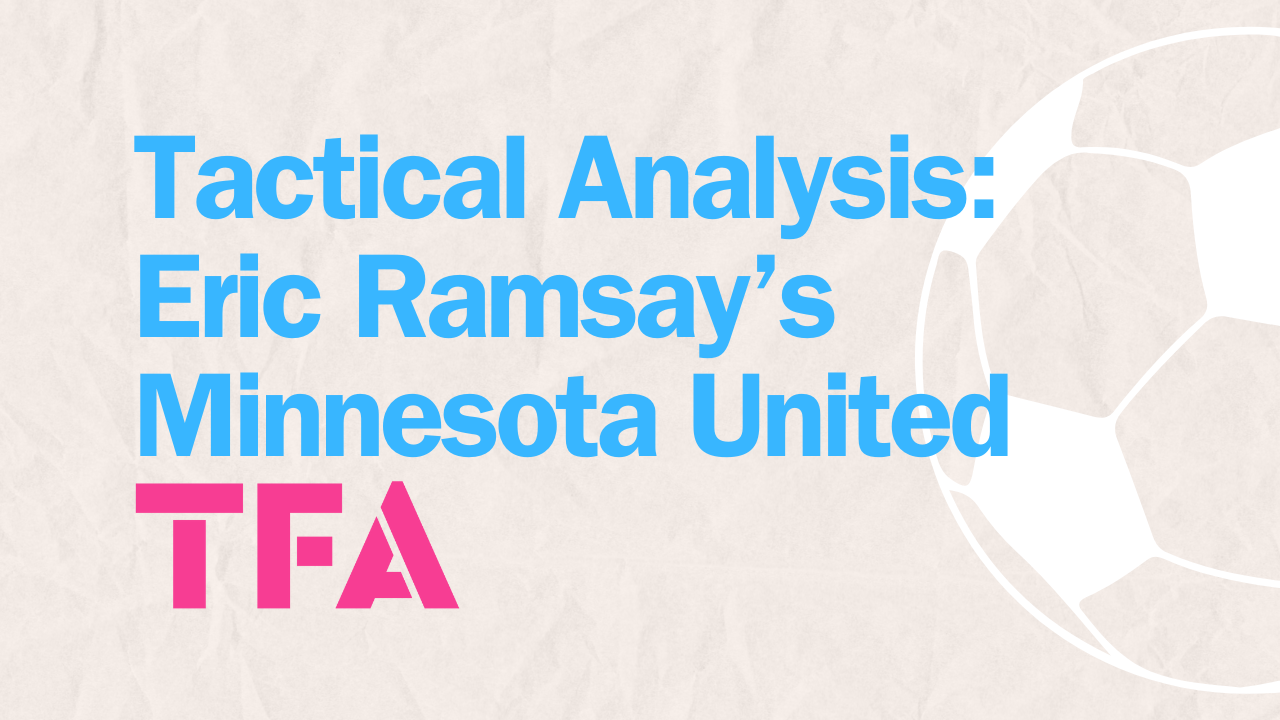




Comments